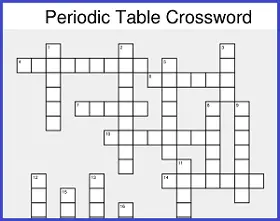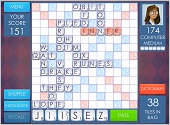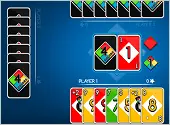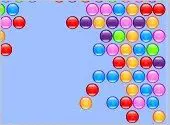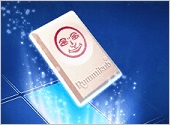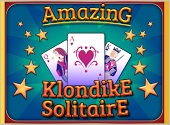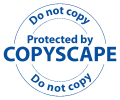- Home
- Better Memory
- Brain Games
- Free Online Brain Games
- Periodic Table Crossword Puzzle
Periodic Table Crossword Puzzle - Free
Here's a free Periodic Table crossword puzzle, a fun way to exercise your brain. Solve the puzzle online or print it out.
To solve it online, click the Solve Online button under the picture of the puzzle. This opens the crossword in a pop-up window.
This puzzle is part of the free online brain games collection. For a list of all my free crosswords, visit the Easy Printable Crossword Puzzles page.
Periodic Table Crossword Puzzle Instructions
If you like this Periodic Table crossword puzzle, check out the other word games on this site, including Hangman Classic and the free online word searches collection, which includes a Chemistry word search puzzle among many others.
And if you happen to know a child or adult with cognitive special needs, consider printing out and giving them some of my free Special Needs word search puzzles. These word searches have been simplified to make the puzzles more accessible to individuals with autism, traumatic brain injury, memory loss due to brain surgery, Alzheimer's disease or other types of dementia, or other cognitive special needs. The solutions are included as well.
HOW TO PLAY. Using your memory and logic skills, use the provided clues to figure out the words hidden in the puzzle. The hidden words are arranged in a criss-cross grid, where the words overlap each other at common letters.
For the online version of the Periodic Table crossword, click any row or column to highlight it and display the clue. The clue is shown at the top of the puzzle.
If you have a guess for the answer for the clue, type it in the grid. As you work on the puzzle, you can go back and change any of the words you've typed in previously.
To print the crossword and solve it on paper, click the gear icon in the upper right of the puzzle window. Then click the "Printable Version" option to display the printable crossword.
To see the full solution online for the Periodic Table crossword, choose the "Show the Puzzle Solution" option in the gear menu.
The puzzle solution is also provided with the printable version. The solution appears on page 2.
Best of luck solving the puzzle!
Periodic Table Crossword - Surprising Facts
Are you studying the Periodic Table for a chemistry class or other science course? Regardless of your reasons, here are some unusual facts about this most famous table - the initial development of which is generally credited to the Russian chemist Dimitri Mendeleev, who started on it in 1869 - to put you in the mood to solve this Periodic Table crossword puzzle:
At a glance, the Periodic Table is obviously filled with lots of "letters", both within the symbols of the elements and in their names. But, believe it or not, two letters of the alphabet DO NOT APPEAR in any of the names or symbols in the table - the letters J and Q. Please correct me if I'm wrong!
As you may know, many of the symbols for the elements in the Periodic Table don't match the actual element name. That's because the symbols for many of these elements derive from the name of the element in another language, Latin.
Elements that have a Latin-derived abbrevation include: Antimony (SB), from Stibium; Copper (CU), from Cuprum; Gold (Au), from Aurum; Iron (Fe), from Ferrum; Lead (Pb), from Plumbum; Mercury (Hg), from Hydragyrum; Potassium (K), from Kalium; Silver (Ag), from Argentum; Sodium (Na), from Natrium; and Tin (Sn), from Stannum. How many of these did you know?
The element carbon is king. First of all, carbon is the 4th most common element in the universe. Not impressed? How about the fact that about 20% of the overall weight of most living organisms is carbon? Or that more chemical compounds contain carbon than don't?
Now here's the topper: the carbon atoms in your body were all once part of the carbon dioxide in the atmosphere. That means we're not only the stuff of stars (the heavier elements having been formed in supernova), but we are also the stuff of air.
The names of the elements generally derive from six areas: 1) ancient mythology, 2) the names of famous scientists, 3) place names on Earth where the element was documented, 4) heavenly bodies, 5) an element's properties, and 6) the substance from which it was first extracted.
Some examples:
1) Mythology - thorium and titanium, named after the Scandinavian god Thor and the Titans of Greek mythology, respectively, as well as mercury, promethium, and others; 2) Scientists - bohrium (Niels Bohr), curium (Marie and Pierre Curie), einsteinium (Albert Einstein), fermium (Enrico Fermi), lawrencium (Ernest Lawrence), roentgenium (Wilhelm Rontgen), rutherfordium (Ernest Rutherford), and seaborgium (Glenn Seaborg);
3) place names - americium, germanium, pollonium (Polland), francium and gallium (France), nihonium (Japan); 4) heavenly bodies - uranium, named soon after the first observations of Uranus, tellurium (after tellus, the Latin name for Earth), plutonium, neptunium; 5) properties - bromine (meaning stench in Latin) due to its bad smell, cesium (meaning sky blue) because it burns blue; and 6) substance of origin - tungsten, which has the symbol W because it was first isolated from the mineral wolframite, and potassium which was isolted from a substance called potash.
I enjoy solving crossword puzzles. It was a lot of fun coming up with the words and clues for this Periodic Table crossword puzzle.
Crossword puzzles train memory, word skills, and logical reasoning. Solve puzzles like this often to give your brain a boost!
Published: 04/10/2020
Last Updated: 06/11/2020
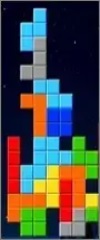
Newest / Popular
Multiplayer
Board Games
Card & Tile
Concentration
Math / Memory
Puzzles A-M
Puzzles N-Z
Time Mgmt
Word Games
- Retro Flash -
Also:
Bubble Pop
• Solitaire
• Tetris
Checkers
• Mahjong Tiles
•Typing
No sign-up or log-in needed. Just go to a game page and start playing! ![]()
Free Printable Puzzles:
Sudoku • Crosswords • Word Search

